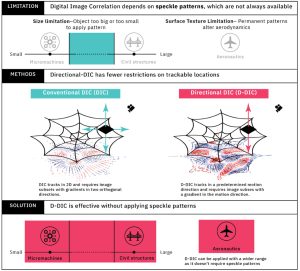In collaboration with the University of Washington, researchers from the Faculty of Mechanical Engineering have published a study in Mechanical Systems and Signal Processing, highly ranked journal in Mechanical Engineering (IF=7.9). The study introduces advancements in using high-speed cameras to analyze the dynamic behavior of structures. High-speed cameras offer a non-contact method for measuring motion and vibrations, often through Digital Image Correlation (DIC). However, DIC struggles when surface patterns are missing, as seen in structures like cables—a limitation known as the “aperture problem.”
To address this, the study proposes Directional DIC (D-DIC), a method that assumes the likely direction of motion, often predictable in vibration tests. This approach improves tracking capabilities, enabling measurements in more locations and providing clearer, more reliable data, even under challenging conditions. Tests on a flexible, web-like structure showed that D-DIC outperforms traditional DIC, particularly in small, pattern-less areas. With the proposed method, it is possible to measure a wide array of structures, even when the surface pattern is insufficient for classical DIC application. This ability enables a faster and easier characterization of structures with non-destructive measurement technique.

